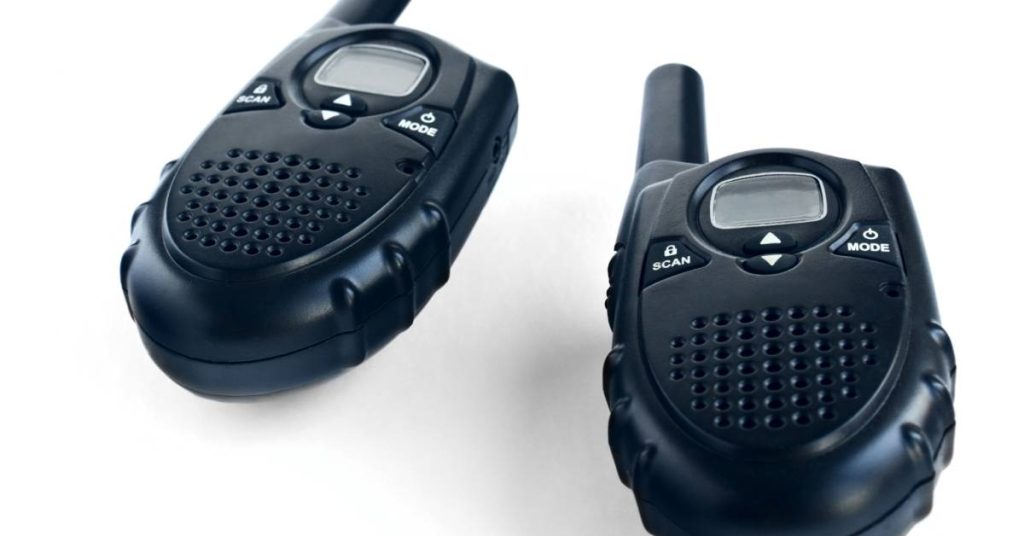For many people, reliable communication is crucial for their everyday needs. From construction and hospitality to security and emergency services, two-way radios are the backbone of communication across industries.
However, when radios lose coverage, it can lead to safety risks, productivity losses, and communication breakdowns. To stay connected when it matters most, we’ll explore ten reasons why your two-way radios are losing coverage, offering insights and practical advice that you can use to improve your radio efficiency.

The Vital Role of Two-Way Radios
Two-way radios are indispensable tools for seamless communication in various industries. They provide a direct line of contact so teams stay connected even in challenging environments.
Whether coordinating logistics, managing a security detail, or keeping a construction crew informed, two-way radios offer a reliable means of communication. Their ability to function without relying on cellular networks makes them particularly valuable in remote areas where other forms of communication may falter.
Ten Reasons Behind Coverage Loss
Coverage loss in two-way radios is a prevalent issue that can disrupt the flow of communication. Here are some common causes.
1. Interference From Physical Obstacles
Physical barriers like buildings, hills, and trees can block radio signals, reducing coverage. These obstacles disrupt the line of sight between transmitters and receivers, leading to weak or lost signals. In urban environments, dense construction materials such as concrete and steel exacerbate this issue. To mitigate this problem, place antennas or repeaters strategically to extend the signal range and improve coverage in obstructed areas.
2. Obsolete Equipment
Older radio models may not support modern frequencies or advanced features, limiting their effectiveness. Outdated hardware struggles to maintain strong connections, especially in environments where advanced technology is required. Investing in newer radios with updated technology can enhance signal strength and coverage so they meet the demands of your communication needs.
3. Improper Channel Usage
Using the wrong frequency or channel settings can cause interference and coverage issues. This is particularly problematic in areas with heavy radio traffic, where overlapping frequencies lead to signal clashes. Educating users on proper channel selection and implementing clear communication protocols can help avoid these clashes and improve overall coverage.
4. Battery Problems
Weak or failing batteries can lead to signal loss and intermittent connectivity. Radios depend on consistent power to function effectively, and depleted batteries can severely reduce their range. Regularly checking and replacing batteries ensures that radios maintain a strong signal.
5. Environmental Conditions
Weather conditions, such as heavy rain or extreme temperatures, can affect radio signals. Moisture in the air can absorb radio waves, weakening signals, while cold or hot temperatures can impact equipment performance. Using weather-resistant radios or cases can protect signals from environmental interference, maintaining reliable communication regardless of the conditions.
6. Frequency Congestion
High traffic on certain frequencies can lead to congestion, causing coverage problems. In areas with numerous radio users, competing signals can cause interference, resulting in poor connectivity. Allocating specific frequencies for different teams or operations can manage congestion and ensure clear communication channels.
7. Antenna Issues
Faulty or improperly positioned antennas can significantly reduce signal strength. Antennas are crucial for transmitting and receiving signals, and any damage or misalignment can compromise their effectiveness. Regularly inspecting and adjusting antennas can maintain optimal signal transmission and prevent coverage loss.
8. Software Glitches
Software issues in the radio system can disrupt communication, causing coverage loss. These glitches can arise from outdated firmware or bugs within the system. Keeping radio software up to date and performing routine maintenance checks can resolve these issues.
9. Network Configuration Errors
Incorrect network configurations can lead to connectivity problems and coverage loss. Misconfigured settings can prevent radios from accessing necessary frequencies or connecting to other devices. Properly configuring networks and regularly reviewing settings can prevent these errors and support stable communication.
10. Insufficient Power Output
Radios with low power output struggle to maintain strong signals over long distances. Power output affects the range and clarity of transmissions, especially in challenging environments. Adjusting power settings or using external amplifiers can boost signal strength, extend coverage, and improve communication.

Proper Storage Practices for Two-Way Radios
You must follow proper storage practices to safeguard the longevity and performance of two-way radios. Here are key guidelines to consider:
- Keep radios in a cool, dry place: Store radios in an environment free from moisture and extreme temperatures to prevent damage to the internal components.
- Use protective cases: Utilize durable cases to protect radios from dust, physical damage, and environmental exposure when not in use.
- Charge batteries appropriately: Avoid overcharging batteries by removing them from chargers once fully charged and storing them separately from the radios if not in use for extended periods.
- Avoid direct sunlight: Direct exposure to sunlight can cause radios to overheat, degrading their performance.
- Regularly clean and inspect equipment: Periodically clean your radios and check for damage. Address issues promptly to prevent long-term problems.
- Label and organize radios: Clearly label each radio with user information or unit numbers to keep track of inventory and ensure the proper allocation of equipment.
- Conduct inventory audits: Routine audits of radio equipment help in monitoring conditions and identifying units that require maintenance or replacement.
With proper care and attention, your radios will work even in the most challenging situations.
Future-Proofing Your Communication Network
As technology advances, you must guarantee your communication network is reliable and adaptable. Read below for strategies to future-proof your two-way radio systems.
Implement Scalable Technologies
Embrace communication solutions that can adapt and expand with your organization’s needs. Scalable technologies allow you to add more radios or integrate new features without a complete system overhaul, making it easier to accommodate growth and changes in operations.
Prioritize Regular Training
Train your team to use two-way radios and adapt quickly to technological upgrades. Regular workshops and training sessions keep users informed about the latest features and best practices, maximizing the effectiveness of your communication network.
Invest in Hybrid Systems
Consider hybrid communication systems that incorporate digital and analog technologies. This dual capability provides flexibility, allowing seamless transitions between different communication standards and enabling integration with future upgrades without losing current functionality.
Stay Updated on Regulatory Changes
Keep informed about regulatory changes affecting radio frequencies and communication standards. Compliance with legal requirements avoids penalties and ensures your network operates efficiently and safely within permitted ranges.
Foster Vendor Relationships
Develop and maintain strong relationships with your equipment vendors and service providers. This connection offers access to expert advice, timely upgrades, and effective solutions tailored to your organization’s evolving communication needs.
Adopt these strategies to strengthen your communication system and prepare it for future demands.
Enhancing Operational Efficiency Everywhere
Reliable two-way radio coverage is essential for effective communication in any industry. By exploring these ten reasons why your two-way radios are losing coverage, you can prevent or resolve communication disruptions and enhance operational efficiency.
If you’re having trouble with communication on your two-way radio network, an APX 4000 battery from Battery Distributors offers reliable power at an affordable price. Whether you’re addressing immediate issues or planning ahead, taking action now will pay dividends in improved communication and operational success.











